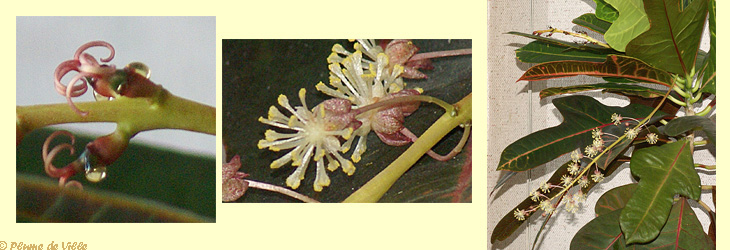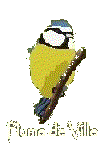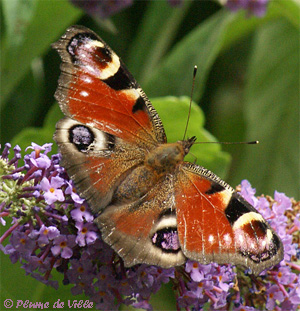Plume de Ville
From day to day.
°°°°°°°°°°°°°°°°°°°°°°° °
July -1- 2008
6 July
These
outgrowths
appearing all years on our poplar (poplar Italy), are spirals galls.
Placed on
the petiole of the leaf, they are the work of an insect, an aphid,
Pemphigus
spirothecae.
It is a modification of the plant following the attack of aphids that
suck sap
from the leaf, pricking the petiole. The plant is deformed and the
stalk turns
on itself. The spiral can turn right or left.
Installed and locked in the gall, the aphid (called "founder") gives
birth by parthenogenesis, in June to a first generation of individuals
without
wings. Aphids exit through a passage when the gall dries and opens and
leave
the gall in August. Aphids take refuge in the bark of the tree. They
lay eggs
from which emerge male and female individuals.
After mating, in the winter, the females lay eggs in the bark (called
winter eggs);
hence the following year in spring, will born future founders of galls.
These insects responsible of galls are called gall-making insects. They
may be
aphids or small wasps like cynips or "gall fly or wasps" or flies.
Some beetles and caterpillars may also be responsible for
malformations.
Nematodes and mites can also create these deformations of which there
are a variety
of forms depending on the parasite, the attacked plant and the location
of the
attack.
There is no significant damage to the tree.
Poplar spirals
galls.
Gall inside
the with its colony of aphids non-winged and "woolly".
A more
evolved individual which shows clearly the half of the body that has
lost part
of his "down". The size of aphids is approximately 1 mm.
Previous year dried out and opened gall. The leaf has fallen and there is still the dried stalk.
9 July
15 cm
and
25 cm
A very
classical plant, croton (Codiaeum variegatum) of the Euphorbia family,
it
lowers again every year, sometimes twice a year. Two types of long
inflorescences appear on the plant (female and male), and emit a strong
fragrance. These flowers are said "insignificant", but I found great
elegance to these dense and light pompoms.

10 July
These
small
snow flakes of just a millimetre, mealybug (Pseudococcus), on a orchid sapling.
They're
really strange with their long tail.
But it is better not to let them settle, protected by their shield they
are
difficult to convince to leave the plant.
This young
grasshopper plunged into the cornucopia (somewhat hellish!) of the
bignonia flower,
and has betrayed its presence by a sudden small downpour felled from
the cone,
which made me go to see the origin of this rain under a beautiful blue
sky. The
flower-filled water spilled its contents at its passage.
It antennas
are disproportionately long: twice the size of its body of about 2 cm.
Disturbed,
she took refuge on the green leaves of the vanda.
I
hope this will not give it other gastronomic ideas.
Is
it a Great
Green Bush Cricket?
Let it
grow!
Few bird activities.
Some sparrows, but all other seem have left.
11 July
These
balcony little bugs.
As the
years pass, unfortunately we encounter fewer and fewer butterflies,
almost none
diurnal. Some moths, as these two.
Small moth of the geometridae family. Present throughout Europe and France. Lives on catchflies, honeysuckles, nettles. 15mm
Its caterpillar (loopers, spanworms, or inchworms)
feeds on ivy (there are on the balcony) and so goes
through the winter.
Double-striped pug. -. Gymnoscelis rufifasciata.
Another
geometridae. Widely spread throughout Europe. It is often posed on
walls, as I
found this one. The caterpillar eats flowers, such as clematis (oh, oh)
As the
elder, honeysuckle, oregano ...
The species overwinters as a pupa.
If you find
an identification error, please let me know, thank you.
This
beautiful butterfly is not on our balcony, even if I happened to have
beautiful
nettles, that its caterpillar likes especially, growing on a few square
centimetres
of soil.
Adult,
it gathers nectar from plants like buddleia where he was kindly posed
to
allow us admire it.
Common
in Europe, but for how long? To conserve it, let him have some nettles,
the caterpillar eats them blithely and will take care of them, forget
herbicides.
It is a Peacock, (Inachis io). Nymphalidae family. 5 cm
It overwinters at the adult stage.
Bois de Vincennes - 100708 -.














